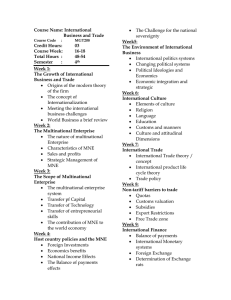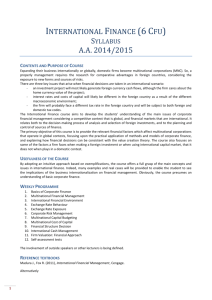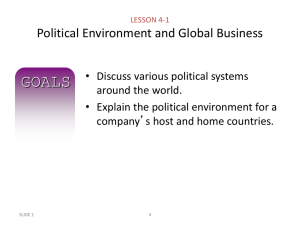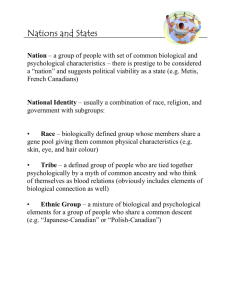File
advertisement
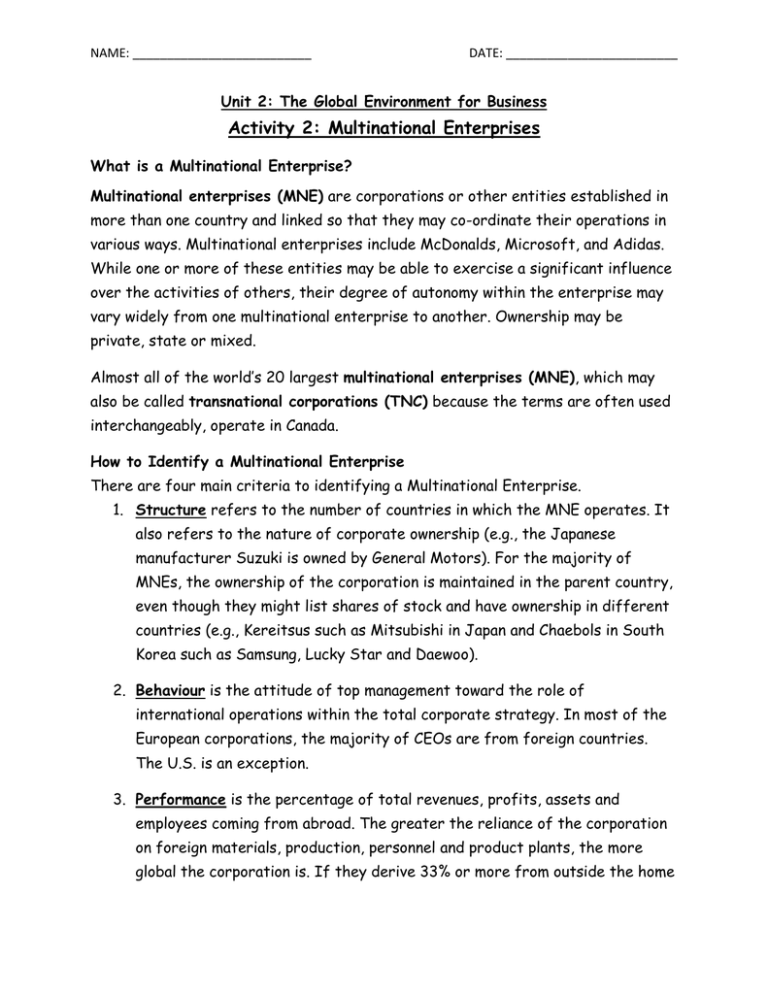
NAME: __________________________ DATE: _________________________ Unit 2: The Global Environment for Business Activity 2: Multinational Enterprises What is a Multinational Enterprise? Multinational enterprises (MNE) are corporations or other entities established in more than one country and linked so that they may co-ordinate their operations in various ways. Multinational enterprises include McDonalds, Microsoft, and Adidas. While one or more of these entities may be able to exercise a significant influence over the activities of others, their degree of autonomy within the enterprise may vary widely from one multinational enterprise to another. Ownership may be private, state or mixed. Almost all of the world’s 20 largest multinational enterprises (MNE), which may also be called transnational corporations (TNC) because the terms are often used interchangeably, operate in Canada. How to Identify a Multinational Enterprise There are four main criteria to identifying a Multinational Enterprise. 1. Structure refers to the number of countries in which the MNE operates. It also refers to the nature of corporate ownership (e.g., the Japanese manufacturer Suzuki is owned by General Motors). For the majority of MNEs, the ownership of the corporation is maintained in the parent country, even though they might list shares of stock and have ownership in different countries (e.g., Kereitsus such as Mitsubishi in Japan and Chaebols in South Korea such as Samsung, Lucky Star and Daewoo). 2. Behaviour is the attitude of top management toward the role of international operations within the total corporate strategy. In most of the European corporations, the majority of CEOs are from foreign countries. The U.S. is an exception. 3. Performance is the percentage of total revenues, profits, assets and employees coming from abroad. The greater the reliance of the corporation on foreign materials, production, personnel and product plants, the more global the corporation is. If they derive 33% or more from outside the home NAME: __________________________ DATE: _________________________ country, the MNE is considered a global corporation (e.g., Nestle of Switzerland does almost 98% of its business abroad). 4. Coordination is how the business looks at its worldwide operations (e.g., multi-domestic or global). Multi-domestic occurs when each country is regarded as a different market. For example, McDonalds has international variations for its menu. Global is where the business considers the world as one market and standardizes its products. For example, many electronic and computer companies are global operations. Assignment 1 – Enterprise Characteristics Multinational enterprises or corporations can be classified as multi-domestic or global. Use your textbook and websites, such as Reference.com, to research these business classifications and fill in the graphic organizer provided. Classification Multi- Domestic Global Characteristics Canadian Examples NAME: __________________________ DATE: _________________________ Assignment 2 - Multinational Enterprises vs. Domestic Companies There are many Canadian companies that are not global, but rather focus on domestic business activity. Let’s compare these companies to multinational enterprises by completing the following questions. 1. Name two Canadian companies you are familiar with that focus on domestic business activity as opposed to global business activities. 2. List two reasons why companies locate in more than one country? 3. List three reasons why you think the companies you listed in question 1 are only located and operate within Canada? NAME: __________________________ DATE: _________________________ 4. Do you think setting up foreign production plants helps companies be closer to local customers and serve them better? Why or why not?


